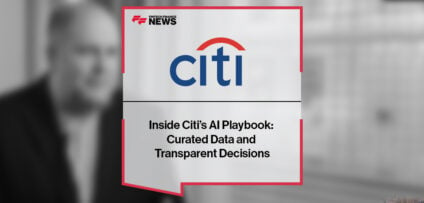Breaking News
FF News Tattoo Studio: EY on Ending Band-Aid Fixes in Banking
Natalie Brown, a partner at EY, joined us at the FF News Tattoo Studio at Sibos 2025 in Frankfurt to talk about what it really takes to deliver transformation in financial services. Brown leads EY’s Business Transformation practice across Australia and New Zealand, and has been with the firm for around six and a half years. She chose EY, she says, because of the people and because leaders backed her to build something new. Starting with just two people, her team set out to create an operations transformation practice that wasn’t “process mapping for its own sake,” but a future-back redesign of operating models aimed at unlocking measurable productivity for clients. That trust extended beyond work: during difficult moments in her personal life, colleagues rallied around her. For Brown, that blend of professional belief and human support is why the role matters.
On why large incumbent banks finally commit to real change, EY is candid: banks often default to short-term productivity plays, “spans and layers” exercises or tactical automation—to meet near-term targets. But the combination of mounting macroeconomic pressure (including rising debt costs) and the arrival of usable AI has pushed institutions to the edge of what legacy architectures can tolerate. After years of “band-aids,” most quick fixes are exhausted. In EY’s view, that’s forcing a shift from incrementalism to genuine transformation, rethinking the model, not just the workflow.
Culture, Brown stresses, is where programmes succeed or stall while execution and adoption are the usual failure points, so she urges broad, early alignment across the enterprise, from product and legal to technology, back office and operations, because each group carries different KPIs. Get those stakeholders pulling in the same direction and anchor the effort in first principles: why are we doing this at all? Beyond internal financial targets, she argues, financial services exists to create wealth that ultimately benefits society. Keeping customer outcomes front and centre is the best way to sustain momentum and make the change stick.
Asked how clients approach AI, EY sees a mix. Some arrive with “we want AI” briefs; others bring business problems where AI may or may not be the answer. Either way, EY believes a trusted adviser now needs a clear point of view on where AI belongs in the roadmap, otherwise they risk irrelevance. At the same time, given today’s economic backdrop, many banks and insurers are prioritising near-term productivity wins. That’s why early AI use cases skew practical and contained while larger-scale transformations are sequenced behind them.
People In This Post
Companies In This Post
- GNOMI Launches the Only ‘Finance Mode’ with Real-Time Global Earnings Calls and Generative Market Intelligence Read more
- Cross River Launches Stablecoin Payments With Infrastructure to Power the Future of Onchain Finance Read more
- Tidalwave Raises $22M Series A, on Track to Reach 4% of U.S. Mortgage Market Read more
- Emerging Market Opportunities: The Next Billion Customers | Freemarket, Fincra and Axiym | FF Virtual Arena #358 Read more
- Inside Citi’s AI Playbook: Curated Data and Transparent Decisions Read more



















